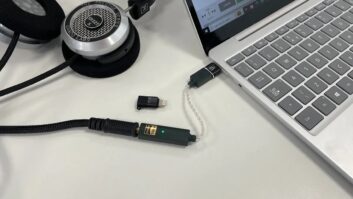NEW YORK —
U.S. CE inventories should be at
normal levels in the short term, but the availability
of certain products may become scarce and retail
prices may go up as the impact of the Japanese
earthquake, tsunami and nuclear accident is felt.
That was the consensus of several industry analysts
and U.S. CE executives contacted by TWICE
last week as reports of Japanese factories being
damaged, closed or destroyed began to surface.
Many finished goods from Japanese CE makers
are now made in China, Southeast Asia and Mexico.
But key components for those products, such
as flash memory, dynamic random access memory
(DRAM), camera lenses, LCD and plasma panels,
Blu-ray parts and others, are made in Japan, according
to an IHS iSuppli report. Hardest hit may be lithium-ion batteries, according
to a Japan Times report last week quoting the Daiwa
Securities Group, because Sanyo Electric and Sony
plants can’t get materials to make the batteries.
Fusion Trade, an independent electronics component
distributor, issued a statement last week
saying it saw prices increase between 15 percent
to 20 percent on various memory components during
the first weekend of the crisis. Japan has nearly
40 percent of NAND flash-memory parts coming
from the region, Fusion said, and companies are
buying up more parts than they actually need to
prepare for anticipated backlogs and delays, rekindling
the component shortage that was recently
ending, probably boosting prices.
Paul Romano, COO of Fusion, told TWICE, “I
think in the short term there will not be an immediate
effect” of short supplies of components. “As we
get out a couple of weeks, there will be a significant
impact. There has been physical damage [to
plants], and these components all feed into the CE
industry in a big way.”
Romano expects shortages of inductors, batteries
and other components designed for “MP3 players
[and] gaming systems … there will be a ripple
effect” if plants are down for a while, “even Apple.
It will affect everyone in two weeks. We have to see
how far-reaching [shortages] will be.”
Stephen Baker, industry analysis VP for The NPD
Group, said that in PC components, “Japan is important
but clearly not as central to the supply chain as China or Taiwan. I think the biggest
impact will be the disruption on the
company operations. Toshiba, Sony,
Fujitsu are all important international
PC companies and disruptions among
their corporate employees could mean
slowdown in product cycles, slowdown
in product and marketing decisions
etc. Those are longer term issues
that could allow non-Japanese
companies like Dell or HP or Acer gain
some additional traction in the market.”
Sweta Dash, flat-panel component
analyst for IHS iSuppli, told TWICE in
flat-panel TV displays most facilities in
Japan fall outside the earthquake area,
with only Sharp and Panasonic having
LCD factories in the country.
“Panasonic LCD has two fabs ( 6th
Gen and 8th Gen) and only the 6th
Gen fab is located near the earthquake
peripheral zone. That fab only
supplies to the Panasonic brand and
some China brands. Production has
been impacted temporarily as they
are checking the lines after the quake.
There has been some concern about
three hours of power cut in that region,
but [the plant] has not been impacted
yet. As you can see from the TV panel
side, supply impact is minimal.”
Dash noted that in February, “the
U.S. market had still six to seven weeks
of TV set inventories, which is considered
normal to slightly high level for
this time. Some brands are still trying
to reduce inventories as new models
are coming in. That is why I don’t
see any immediate impact on finished
goods supply in March.”
Production of LCD components
such as glass, color filter, polarizer,
LED or CCFL are reported to be fine,
but Dash did agree with others, saying,
“The biggest fear is power-shortage impact
in future. If it continues and some
factories have to face power cut, then
it will impact production and supply.
Most of the panel suppliers will have
enough supply to take them through in
the short run. But in the long run it has
the potential to impact, if power issue
continues for a long time.”
But even those plants that are not in
the earthquake zone and are undamaged
will have problems shipping and
even producing goods due to infrastructure
problems that will affect the
entire country.
Mario Moreno, economist for The
Journal of Commerce, said last week
that Japanese exports “will weaken in
the months ahead as the closing of
several manufacturing plants prompted
by electricity shortages, combines
with severely damaged roads and
bridges to hamper production.”
— Additional
reporting by Greg Tarr and
Doug Olenick













